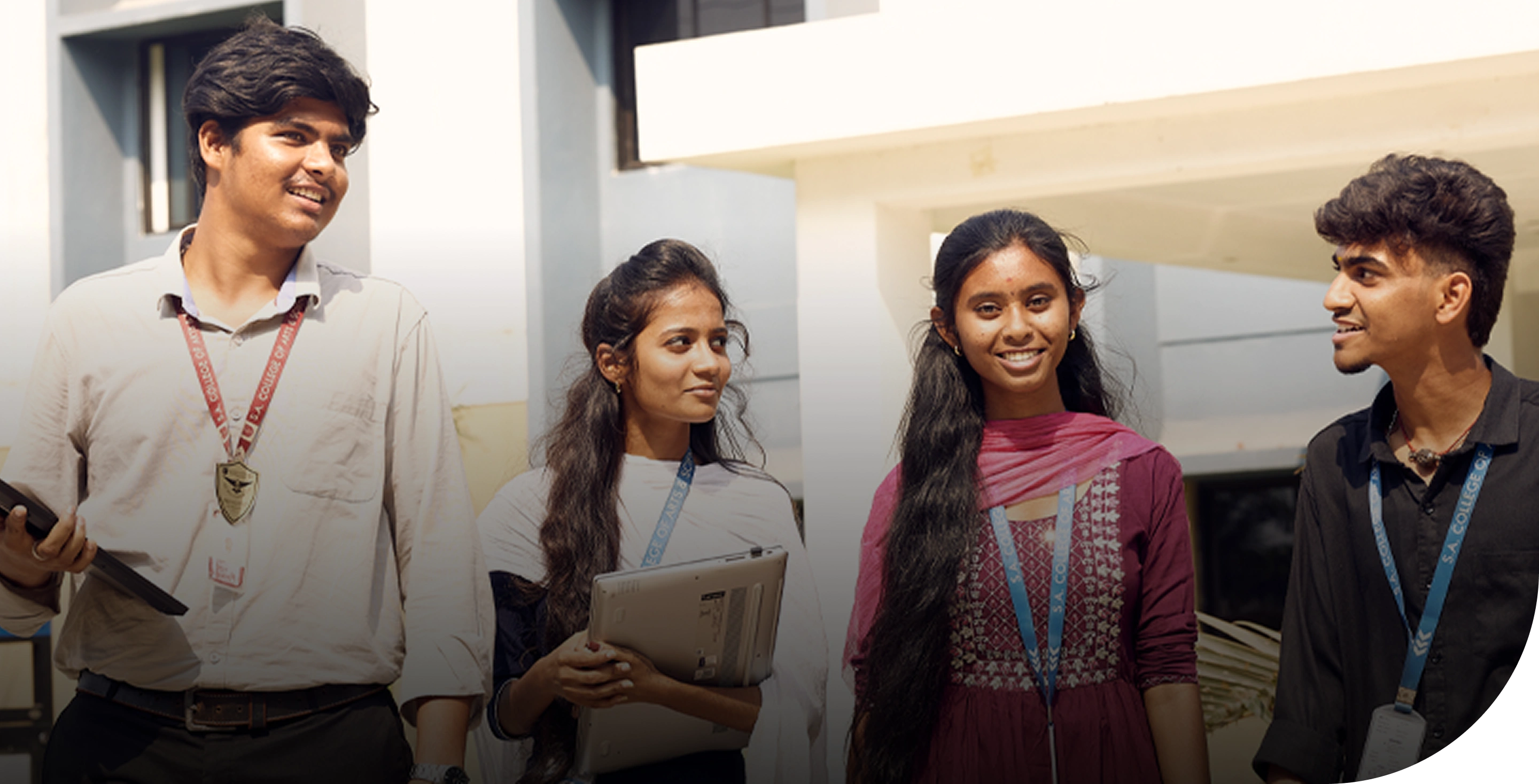
Socio-Economic Disadvantaged Groups (SEDG) Cell
The SEDG Cell at SACAS promotes equity, inclusion, and empowerment for students from marginalized communities through education, awareness, and support programs.
Introduction
The Socio-Economic Disadvantaged Groups (SEDG) Cell is an institutional body formed to support, empower, and uplift students belonging to economically and socially marginalized communities. It ensures equal opportunities, inclusivity, and access to resources for the holistic development of such students. The establishment of this cell is in line with the National Education Policy (NEP) 2020, which emphasizes equity and inclusion in higher education.
Vision
To create an inclusive, equitable, and empowering academic environment where students from socio-economically disadvantaged backgrounds can thrive and achieve their full potential.
Mission
- Identify and address the academic, financial, psychological, and social challenges faced by SEDG students.
- Ensure equitable access to education, scholarships, and career opportunities.
- Create awareness and sensitize the campus community toward inclusivity and social justice.
- Implement welfare schemes and support mechanisms to enhance retention and success rates of SEDG students.
Objectives
- Support and Empowerment: Provide financial, academic, and emotional support to students from SEDG backgrounds.
- Awareness and Sensitization: Conduct programs promoting equality, diversity, and inclusivity.
- Skill Development: Organize workshops and training sessions to enhance employability and life skills.
- Policy Implementation: Ensure proper execution of government and institutional welfare schemes.
- Monitoring and Feedback: Establish a system for continuous evaluation of the cell’s functioning and impact.
Definition of SEDG
As per NEP 2020, SEDGs include but are not limited to:
- Scheduled Castes (SC)
- Scheduled Tribes (ST)
- Other Backward Classes (OBC)
- Economically Weaker Sections (EWS)
- Persons with Disabilities (PwD)
- Women
- Religious and linguistic minorities
- Orphans and first-generation learners
- Students from remote or rural areas
Functions and Activities of the SEDG Cell
- Data Collection and Identification – Maintain records of SEDG students and identify those needing support.
- Financial Assistance – Facilitate scholarships and recommend fee waivers or concessions.
- Academic Support – Arrange bridge courses, remedial classes, and mentorship programs.
- Skill and Career Development – Conduct workshops on communication, soft skills, and career guidance.
- Awareness and Sensitization – Celebrate diversity days and conduct equality seminars.
- Health and Wellbeing – Offer counseling and collaborate with health centers for wellness initiatives.
- Monitoring and Reporting – Submit annual reports and maintain transparency in all activities.
Organizational Structure / Committee Formation
- Chairperson: Principal / Head of Institution
- Coordinator / Convenor: A senior faculty member
- Members: Representatives from major departments,One faculty member from each faculty, student representatives, One administrative staff member, and External advisor (optional – social worker/NGO representative).
- Student Volunteers: Selected through nomination or open call.
Roles and Responsibilities
- Chairperson: Approves action plans, oversees functioning, and liaises with higher authorities.
- Coordinator: Plans and executes programs, maintains communication, and prepares reports.
- Members: Identify SEDG students, mentor and support them, and participate in outreach and awareness events.
- Student Representatives: Bridge between the cell and student community, providing feedback and suggestions.
Rules and Regulations
- The SEDG Cell functions under the supervision of the Principal.
- Meetings should be held at least once every semester.
- Records of minutes, attendance, and reports must be maintained.
- Confidentiality of student information must be ensured.
- Collaborate with Equal Opportunity Cell, Grievance Redressal Cell, and IQAC.
- Annual reports must be submitted to IQAC for institutional review.
Expected Outcomes and Benefits
- Improved access to education and financial support for SEDG students.
- Enhanced confidence, participation, and academic performance.
- Reduced dropout rates among marginalized students.
- Strengthened institutional reputation for inclusivity and social responsibility.
- Development of a socially aware and empathetic student community.
Documentation and Reporting
- Maintain list of SEDG students and records of scholarships, financial aid, and counseling.
- Keep annual action plans, event reports, and photographic documentation.
- Collect feedback forms and conduct impact analysis.
Sample Vision & Mission Board
- Vision: "Empowering every student through inclusivity, equality, and opportunity."
- Mission: "To identify, support, and uplift socio-economically disadvantaged students by creating an equitable learning environment that fosters growth, dignity, and social justice."
Possible Collaborations
- Government Departments: Social Welfare, Minority Affairs, Women and Child Development.
- NGOs: Local organizations working for education and equality.
- Corporate CSR Programs: For scholarships and training.
- Alumni Association: Mentoring and sponsorship opportunities.
Annual Plan Example (Model)
| s No | month | activity | objective |
|---|---|---|---|
| 1 | July | Orientation for SEDG students | Awareness of facilities |
| 2 | August | Scholarship awareness drive | Financial support |
| 3 | October | Soft skills & personality development workshop | Career growth |
| 4 | January | Health and wellness program | Wellbeing |
| 5 | March | Annual review meeting | Evaluation |